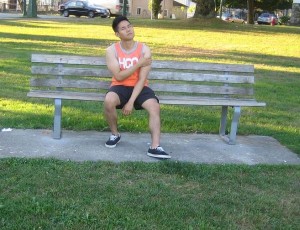Once the arms and shoulders are overly stretched, the muscles, ligaments and tendons might be lengthened way past their normal range of motion which causes shoulder instability. The instability of the shoulder increases the risk for shoulder injuries such as sprains, strains and dislocations. Once shoulder injury occurs, a doctor should be consulted so that proper treatment can be started.
What is instability?
Overstretched muscles deactivate and eventually lose their ability to contract normally, thus reducing joint stability. The overstretched ligaments that attach to and stabilize the shoulder bones can also lead to joint instability. The decrease in the arm muscle activation as well as stabilization of the ligament increases the risk for shoulder injuries.
Who are at risk?

Individuals who are considered high risk to overstretching and shoulder injuries include gymnasts and baseball pitchers. Certain sports in which athletes are prone to acute overstretching of the arms due to a fall, tackle or reach include volleyball, football and baseball. Those who participate in yoga who perform positions incorrectly might overly stretch out the arms and end up with shoulder injuries.
Muscle and tendon strains
Once the arm is overly stretched out, the muscles that surround the shoulder might become pulled or strained which results to a torn muscle. The tendon in which the muscle attaches to might also overstretch and end up strained. A strain on the tendon or muscle might be a partial or complete rupture. The symptoms include pain, point tenderness and swelling. When managing a possible tendon or muscle strain, the individual should stop any physical activity, apply an ice pack and seek medical care.
Ligament sprains
The ligaments attach the bones that comprise the shoulder joint. These ligaments are considered rigid, thus overstretching the shoulder joint and arm due to a fall or reaching out can cause the ligaments to lengthen beyond normal limits. The symptoms include swelling and pain. In most cases, the treatment involves rest and application of ice. A doctor should be consulted for proper treatment in case of severe ligament sprains.
Subluxations and dislocations
Overly stretching the ligaments and muscles around the shoulder increases the instability and risk for dislocation or subluxation. A shoulder dislocation occurs once a shoulder joint is out of the socket and requires reduction or manual restoration.
A subluxation occurs once it goes back into the socket naturally. Take note that shoulder dislocation or subluxation overstretches the ligaments which further increases the risk for future shoulder injuries. The symptoms usually include numbness, pain and diminished range of motion. After sustaining a subluxation or dislocation, it is best to seek medical care right away.
Labral tear
The glenoid labrum is a cartilage that surrounds the shoulder joint which helps in stabilizing the shoulder. Overstretching of the arms can increase the wear and tear on the labrum, resulting to tearing and fraying. In some cases, a torn labrum can also develop secondary to a subluxation or dislocation. The symptoms include pain, catching and diminished range of motion. A doctor should be consulted for appropriate treatment that might include surgery.
